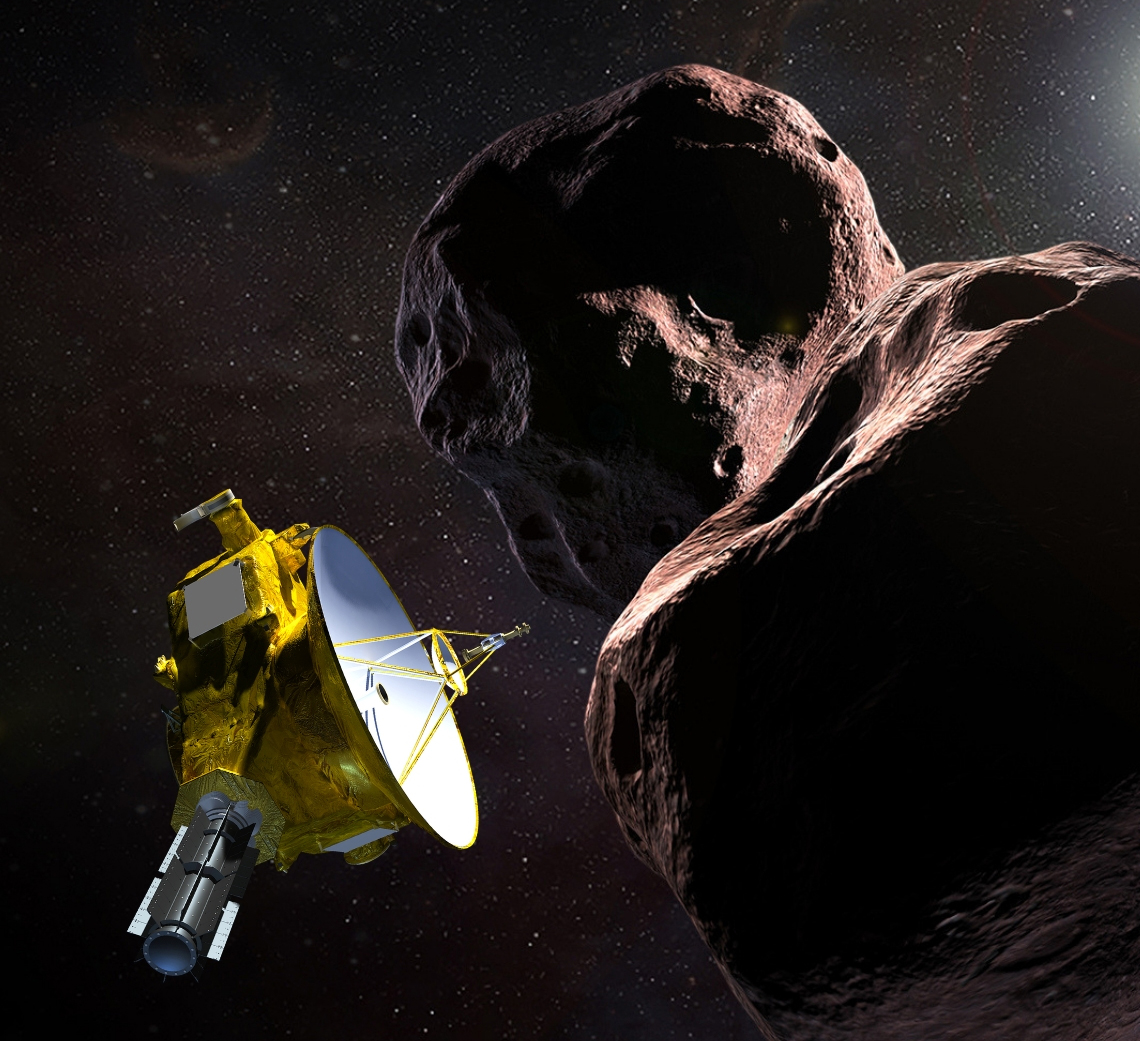NASA goes where no ship has gone before
China Daily | Updated: 2019-01-01 08:09

US space agency will photograph the farthest and oldest cosmic body to date
TAMPA - A NASA spaceship is zooming toward the farthest, and quite possibly the oldest, cosmic body ever photographed by humankind, a tiny, distant world called Ultima Thule about 6.4 billion kilometers away.
The US space agency will ring in the New Year with a live online broadcast to mark historic flyby of the mysterious object in a dark and frigid region of space known as the Kuiper Belt at 05:33 GMT on Tuesday.
A guitar anthem recorded by legendary Queen guitarist Brian May-who also holds an advanced degree in astrophysics-will be released just after midnight to accompany a video simulation of the flyby, as NASA commentators describe the close pass on www.nasa.gov/nasalive.
Real-time video of the actual flyby is impossible, since it takes more six hours for a signal sent from Earth to reach the spaceship, named New Horizons, and another six hours for the response to arrive.
But if all goes well, the first images should be in hand by the end of New Year's Day.
And judging by the latest tweet from Alan Stern, the lead scientist on the New Horizons mission, the excitement among team members is palpable.
"IT'S HAPPENING!! Flyby is upon us! @NewHorizons2015 is healthy and on course! The farthest exploration of worlds in history!" he wrote on Saturday.
Scientists are not sure what Ultima Thule looks like-whether it is round or oblong or even if it is a single object or a cluster.
It was discovered in 2014 with the help of the Hubble Space Telescope, and is believed to be 20-30 kilometers in size.
Scientists decided to study it with New Horizons after the spaceship, which launched in 2006, completed its main mission of flying by Pluto in 2015, returning the most detailed images ever taken of the dwarf planet.
"At closest approach we are going to try to image Ultima at three times the resolution we had for Pluto," said Stern.
"If we can accomplish that it will be spectacular."
Hurtling through space at a speed of 51,500 kilometers per hour, the spacecraft aims to make its closest approach within 3,500 kilometers of the surface of Ultima Thule.
The flyby will be fast, at a speed of 14 kilometers per second.
Seven instruments on board will record high-resolution images and gather data about its size and composition.
Ultima Thule is named for a mythical, far-northern island in medieval literature and cartography, according to NASA.
"Ultima Thule means 'beyond Thule'-beyond the borders of the known world-symbolizing the exploration of the distant Kuiper Belt and Kuiper Belt objects that New Horizons is performing, something never before done," the US space agency said in a statement.
'Outskirts of solar system'
According to project scientist Hal Weaver of the Johns Hopkins Applied Physics Laboratory, mankind didn't even know the Kuiper Belt-a vast ring of relics from the formation days of the solar system-existed until the 1990s.
"This is the frontier of planetary science," said Weaver.
"We finally have reached the outskirts of the solar system, these things that have been there since the beginning and have hardly changed-we think. We will find out."
Despite the partial US government shutdown, sparked by a feud over funding for a border wall with Mexico between President Donald Trump and opposition Democrats, NASA administrator Jim Bridenstine vowed that the US space agency would broadcast the flyby.
Normally, NASA TV and NASA's website would go dark during a government shutdown.
NASA will also provide updates about another spacecraft, called OSIRIS-REx, that will enter orbit around the asteroid Bennu on New Year's Eve, Bridenstine said.
Agence France-Presse
























